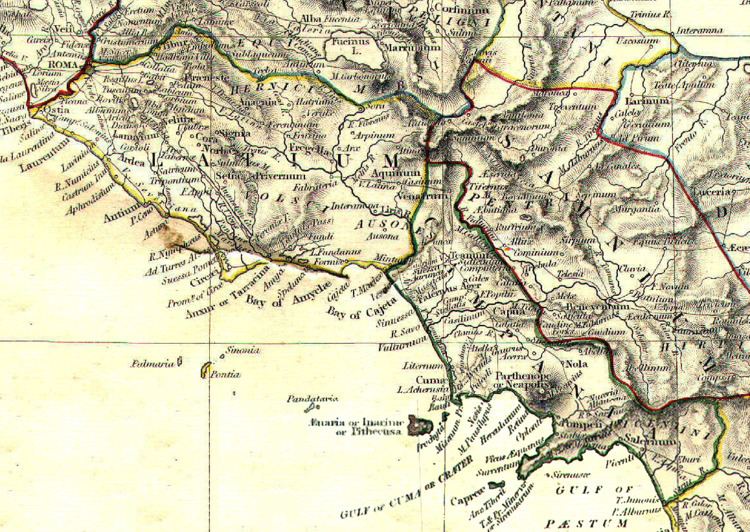 | ||
The Aborigines in Roman mythology are the oldest inhabitants of central Italy, connected in legendary history with Aeneas, Latinus and Evander. They were supposed to have descended from their mountain home near Reate (an ancient Sabine town) upon Latium, where they expelled the Siceli and subsequently settled down as Latini under a King Latinus.
Contents
Etymology
The most generally accepted etymology of the Latin word aborigines, is that it derives from ab origine, according to which they were the original inhabitants of the country, although Cato regarded them as Hellenic immigrants, not as a native Italian people. Other etymological explanations suggested are arborigines, meaning "tree-born," and aberrigines, meaning "nomads". Lycophron calls a people of central Italy, Boreigonoi.
Background
The Aborigines were believed to have been descendants of the Pelasgians, the mythical ancestor of all Greek peoples. Their earliest known home was Reate, an ancient Sabine town to the north-east of Latium near Carseoli. These Aborigines were driven from their mountain home by the Sabines and settled on the river Anio. The Siculians who inhabited Latium at the time, gave way to the Aborigines, a portion of which emigrated to Sicily, from whom its name is said to be derived. The emigration of the Siculians to Sicily is said to have taken place in either 1264 BC or 1035 BC (Thucydides).
The remaining Siculians joined with the Aborigines eventually becoming the people known as Prisci Latini (meaning old Latins), that is Prisci et Latini, or simply Latini. The Aborigines didn't become Latini until the reign of their king, Latinus from whom the Romans attributed their name. This was after the arrival of the Trojans with Aeneas in the aftermath of the Trojan War.
Cities
The following list is based off Dionysius of Halicarnassus.
All of these cities are claimed to have been taken from the Umbrians. In Latium itself the Aborigines had the cities Antemnae, Caenina, Ficulnea, Tellenae, and Tibur some of which Dionysius attests were taken from the Siculians.
